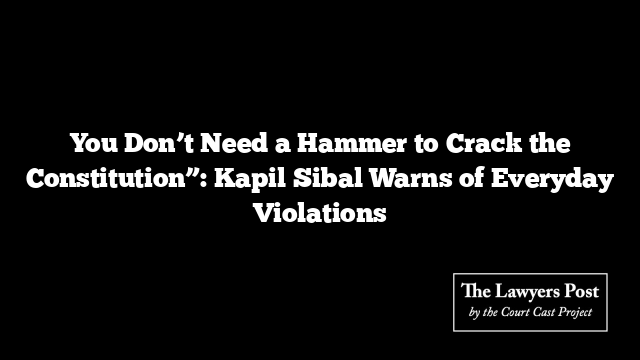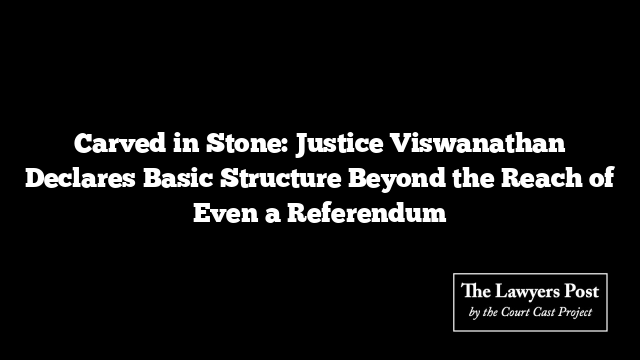In a room full of robes and reverence, where the Constitution’s defenders gathered to welcome Justice Rohinton Nariman’s new book ‘The Basic Structure Doctrine’, Senior Advocate Kapil Sibal dropped a thunderbolt: the soul of the Constitution, he said, is not being rewritten—it’s being quietly hollowed out.
“The Basic Structure doctrine isn’t going anywhere,” Sibal assured, “but that doesn’t mean it can’t be emptied from within.” His tone, calm but cutting, was a warning wrapped in legal nuance: it’s not Constitutional amendments doing the damage—it’s everyday legislation, cloaked in legality, that’s chipping away at the core.
“You don’t need to amend the Constitution to violate it,” he said, “Just pass ordinary laws that ignore its spine—and you’re there.”
Sibal’s concern? That the legal system offers no direct sword to strike such laws down. The Basic Structure doctrine, born in the Kesavananda Bharati case, was meant to guard against Parliament’s abuse of its Constituent power. But if laws that sidestep this core are passed through regular legislative routes, they slip past this shield.
“We are watching the erosion live. Daily,” he said. “Laws are being passed that violate the spirit of federalism, that undermine secularism. And courts? They’re not stopping them.”
Federal principles, secular guarantees, constitutional dignity—Sibal argued these pillars are under stress, but not enough red lights are flashing. To challenge such laws, litigants must turn to Article 13 and Part III—the realm of Fundamental Rights. But courts, he said, aren’t always willing to strike down legislation even when that route is clear.
Justice AK Sikri, weighing in at the same event, agreed the Basic Structure remains India’s constitutional spine. “We are a liberal democracy,” he reminded the room. “But that doesn’t mean a blank cheque for any government. Power is prescribed. Governance is not a free-for-all.”
Abhishek Manu Singhvi, another constitutional heavyweight, reflected on India’s global constitutional influence. “Nearly 20 countries follow our lead on Basic Structure,” he said. “And yet here, we flirt with the idea of retreat.”
He echoed Sibal’s unease but also pointed to a legal gap that needs fixing: “Ordinary laws can’t be struck down for violating basic structure. That’s the current precedent. But maybe that’s a question the Constitution Bench should revisit.”
Senior Advocate Arvind Datar, however, broke from that line of thought. According to him, the idea that only constitutional amendments can violate Basic Structure is too narrow.
“Justice Mathew’s opinion on this was more passing thought than hard rule,” Datar said. “If an ordinary law defies the fundamental framework, courts can act. They should act.”
As the evening wound down, what lingered wasn’t just admiration for a book—it was the uneasy recognition that the Constitution’s safety net might have holes. Laws that don’t scream unconstitutional might still bleed the document dry. And if the courts stay silent, who will speak for the spine of the Republic?
The doctrine lives. But in silence, so might its undoing.





